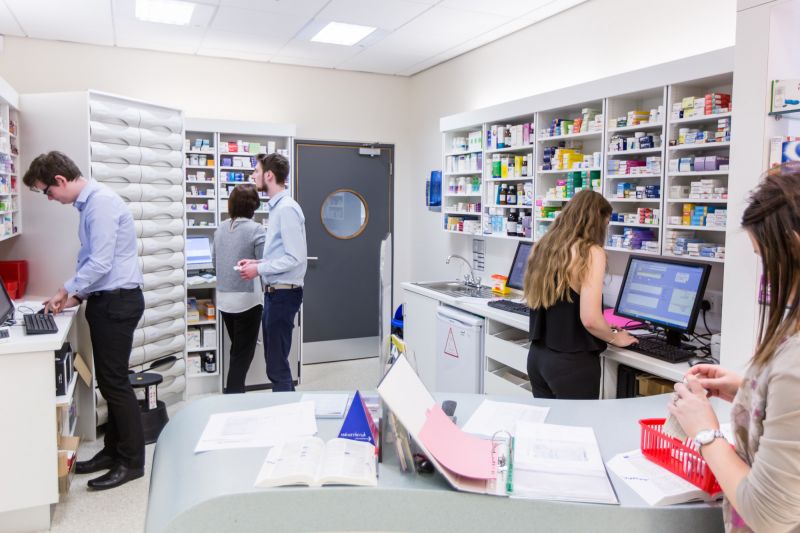Page content
Please take a little time to answer these brief questions as you become familiar with the SuSSD site, fill in our feedback form.
Risk factors of SSD

- Subgrouping children with familial phonologic disorders (opens in new window) (Lewis and Freebairn 1997)
- Epidemiological and Offspring Analyses of Developmental Speech Disorders Using Data From the Colorado Adoption Project (opens in new window) (Felsenfeld and Plomin 1997)
- Academic outcomes in children with histories of speech sound disorders (opens in new window) (Lewis et al. 2000)
- Risk factors for speech delay of unknown origin in 3-year-old children (opens in new window) (Campbell et al. 2003)
- Risk factors for speech disorders in children (opens in new window)(Fox et al. 2009)
- Risk and Protective factors associated with speech and language impairment in a nationally representative sample of 4-5 year old children (opens in new window)(Harrison and McLeod 2010)
- Speech sound disorder at 4 years: Prevalence, comorbidities, and predictors in a community cohort of children (opens in new window)(Eadie et al. 2015)
- Prevalence and Predictors of persistent speech sound disorder at eight years old: Findings from a population cohort study (opens in new window)(Wren et al. 2016)
- Bristol SLT research unit: Understanding the causal pathways for persistent speech disorder (opens in new window)
Assessment of SSD

- Stimulability: A useful clinical tool (opens in new window)(Powell and Miccio 1996)
- Powell and Miccio (1996) Stimulability test (via speech-language-therapy.com) (opens in new window)
- McLeod and Hand (1991) Single word test of consonant clusters
- Patel and Connaghan (2014) Play park picture description task for assessing childhood motor speech disorder (opens in new window)
- Tutorial: Speech Assessment for Multilingual Children Who Do Not Speak the Same Language(s) as the Speech-Language Pathologist (opens in new window)(McLeod and Verdon 2017)
- The Intelligibility in Context Scale: Validity and Reliability of a Subjective Rating Measure (opens in new window) (McLeod et al. 2012)
Analysis

- Phonetic and Phonological Systems Analysis (PPSA (opens in new window)) (Bates and Watson, 2012)
- Good practice guidelines for the analysis of speech (opens in new window) (Child Speech Disorder Research Network, 2018)
- Good Practice Guidelines for Transcription of Children's Speech Samples in Clinical Practice and Research (opens in new window) (Child Speech Disorder Research Network, 2017)
Intervention approaches

Conventional minimal pairs
- Treatment of phonological disability using the method of meaningful minimal contrast (opens in new window) (Weiner 1981)
- Clinical application of two phonological based treatment approaches (opens in new window) (Tyler et al. 1987)
- The effects of minimal pairs treatment on the speech-sound production of two children with phonologic disorders (opens in new window)(Saben and Inghan 1991)
- Treating phonological disorders in a multilingual child: A case study (opens in new window) (Ray 2002)
- Evidence-based management of phonological impairment in children (opens in new window) (Baker and McLeod 2004)
Multiple oppositions
- Multiple oppositions: Case studies of variables in phonological intervention (opens in new window) (Williams 2000)
- Assessment, target selection, and intervention: Dynamic interactions within a systemic perspective (opens in new window) (Williams 2005)
- A systematic perspective for assessment and intervention: A case study (opens in new window) (Williams 2006)
- Intervention efficacy and intensity for children with speech sound disorder (opens in new window) (Allen 2013)
- The treatment efficacy of multiple oppositions phonological approach via telepractice for two children with severe phonological disorders in rural areas of West Texas in the USA (opens in new window) (Lee 2018)
Maximal oppositions
Empty set
- Homonymy in phonological change (opens in new window)(Gierut 1991)
- Teaching and learning /6/: A non-confound (opens in new window) (Gierut and Neumann 1992)
2/3-element Clusters
- Natural domains of cyclicity in phonological acquisition (opens in new window)(Gierut 1998)
- Syllable onsets II: Three-element clusters in phonological treatment (opens in new window) (Gierut and Champion 2001)
- Phonological change in the representation of consonant clusters in Spanish: A case study (opens in new window)(Barlow 2005)
Minimal vs maximal oppositions
- Differential learning of phonological oppositions (opens in new window) (Gierut 1990)
- The effects of target selection strategy on phonological learning (opens in new window) (Rvachew and Nowak 2001)
- The impact of selecting different contrasts in phonological therapy (opens in new window) (Dodd et al. 2008)
- An alternating treatment comparison of minimal and maximal opposition sound selection in Turkish phonological disorders (opens in new window) (Topbas and Unal 2010)
Other relevant papers
- Treating children with phonological problems: does an eclectic approach to therapy work? (opens in new window)(Lancaster et al. 2010)
- Evidence-based practice for children With speech sound disorders: Part 1 narrative review (opens in new window) (Baker and McLeod 2011a)
- Evidence-based practice for children with speech sound disorders: Part 2 Application to clinical practice (opens in new window) (Baker and McLeod 2011b)
- Phonological and articulation treatment approaches in Portuguese children with speech and language impairments: A randomized controlled intervention study (opens in new window) (Lousada et al. 2013)
- Involvement of parents in intervention for childhood speech sound disorders: a review of the evidence (opens in new window)(Sugden et al. 2016)
- A systematic review and classification of interventions for speech-sound disorder in preschool children (opens in new window)(Wren et al. 2018)
- Intervention for children with phonological impairment: Knowledge, practices and intervention intensity in the UK (opens in new window) (Hegarty et al. 2018)
Useful books
- Phonological disorders in children: Clinical decision making in assessment and intervention (Kamhi and Pollock 2005)
- Children's speech sound disorders (Bowen 2015)
- Interventions for speech sound disorders in children (Williams et al. 2010)
- Children's Speech: An evidence-based approach to assessment and intervention (McLeod and Baker 2017)
Intervention intensity

- Differential treatment intensity research: A missing link to creating optimally effective communication interventions (opens in new window)(Warren et al. 2007)
- Treatment intensity in everyday clinical management of speech sound disorders in Hong Kong (opens in new window) (To et al. 2012)
- Optimal intervention intensity (opens in new window)(Baker 2012a)
- Optimal intervention intensity in speech-language pathology: Discoveries, challenges and uncharted territories (opens in new window)(Baker 2012b)
- Characterizing optimal intervention intensity: The relationship between dosage and effect size in interventions for children with developmental speech and language difficulties (opens in new window) (Zeng et al. 2012)
- Intensity in phonological intervention: Is there a prescribed amount? (opens in new window) (Williams 2012)
- How much therapy is enough? The impossible question (opens in new window) (Enderby 2012)
- Intervention efficacy and intensity for children with speech sound disorder (opens in new window)(Allen 2013)
- Intensity of language treatment: Contribution to children's language outcomes (opens in new window) (Schmitt et al. 2016)
- A systematic review of treatment intensity in speech disorders (opens in new window) (Kaipa and Peterson, 2016)
- Service delivery and intervention intensity for phonology-based speech sound disorders (opens in new window)(Sugden et al. 2018)
- Intervention for children with phonological impairment: Knowledge, practices and intervention intensity in the UK (opens in new window) (Hegarty et al. 2018)
Evidence-based practice

- Evidence-based health care: A survey of speech pathology practice (opens in new window) (Vallino-Napoli and Reilly 2004)
- Knowledge and use of evidence-based practice by Allied Health and Health Science professionals in the United Kingdom (opens in new window) (Upton and Upton 2006)
- Evidence-based practice in speech-language pathology: Strengths, weaknesses, opportunities and threats (opens in new window) (Dodd 2007)
- Speech and language therapists' understanding and adoption of evidence-based practice (opens in new window) (Stephens and Upton 2012)
- Intervention research: Appraising study designs, interpreting findings and creating research in clinical practice (opens in new window) (Ebbels 2017)
- Speech pathology as the MasterChef: Getting the right ingredients and stirring the pot (opens in new window) (Enderby 2017)
- Elizabeth Usher Memorial Lecture: How do we change our profession? Using the lens of behavioural economics to improve evidence-based practice in speech-language pathology (opens in new window) (McCabe 2018)
Literature searching

SpeechBITE: Provides a quality rating for a variety of SLT research studies (opens in new window)
Critical Appraisal Skills Programme (CASP) Guidelines website (opens in new window). Contains checklists for:
- Systematic reviews
- Qualitative papers
- RCTs
- Case control studies
- Cohort studies
















